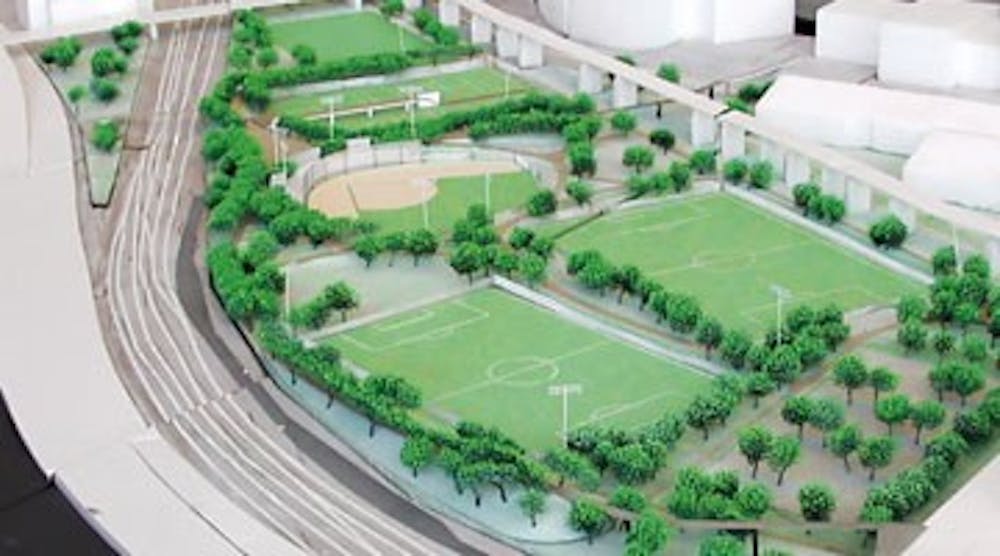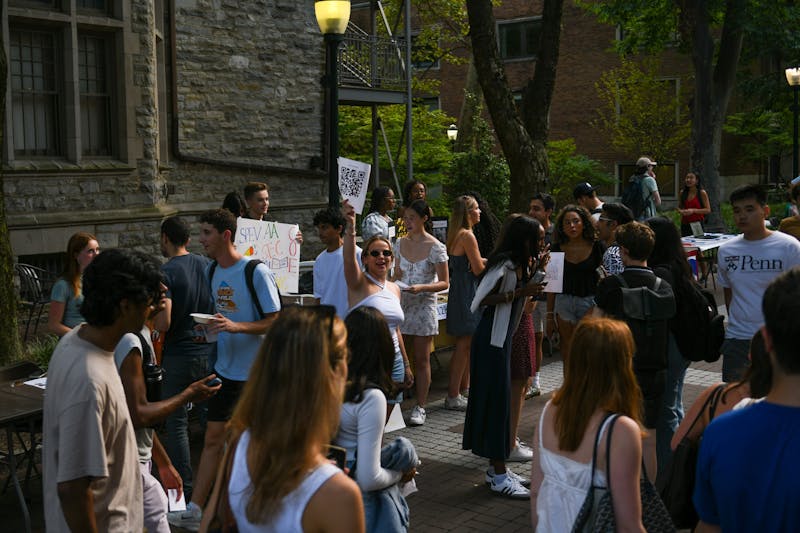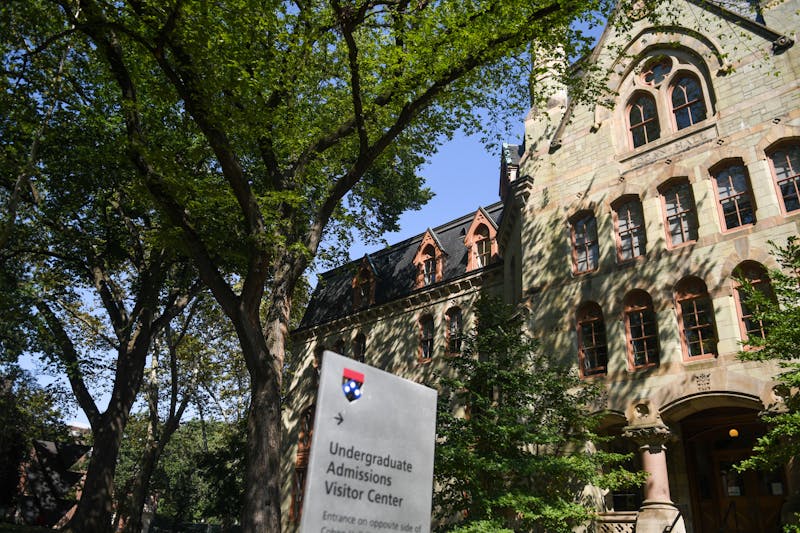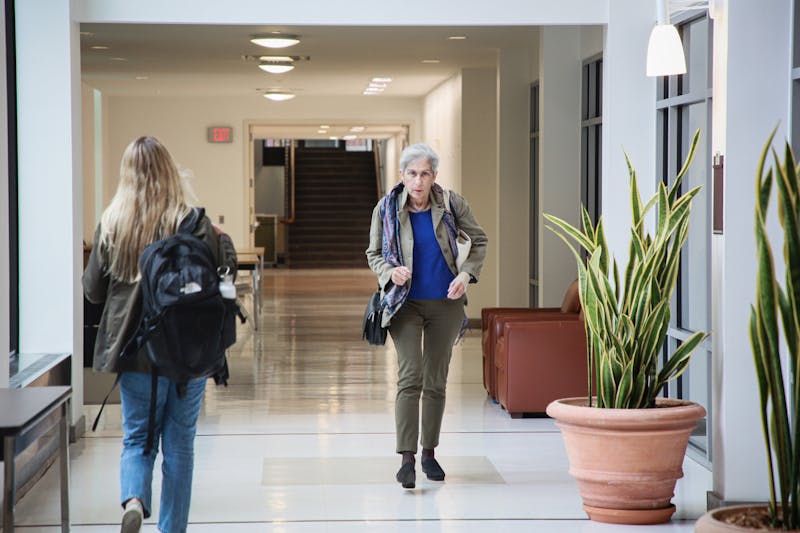
Architect Michael Van Valkenburgh unveiled the model for Penn Park yesterday before the University's trustees.
Penn Park, a $40 million, 24-acre project, will integrate athletic fields in a park-like setting to serve as the athletic hub of campus. It is part of the Penn Connects initiative, the University's urban development plan.
The park will be located on S. 31st Street between Walnut and South streets.
Valkenburgh highlighted different aspects of the design - three fields, a dome to cover a field during winter months, a 12-court tennis center, a softball stadium and possibly a ropes course.
Plus, pockets of open space will cradle the fields, allowing for picnics or other casual activities.
"Historically this is one of the greatest needs," athletic director Steve Bilsky said. "Penn Park tackles it in a wonderful way that will do justice for this campus."
According to Valkenburgh, Penn Park will "connect the University to its context."
Facilities and Real Estate Services Vice President Anne Papageorge said the project is the embodiment of Penn Connects' goals.
"It's not everyday we are fortunate enough to be able to purchase a 24-acre plot of land right next to campus," she said.
Students at other urban universities, such as Columbia University, have to trek several miles to get to their athletic stadiums.
Yet the challenge in constructing Penn's athletic center lies in the topography of the site, which stands at different elevations.
Thus, Penn Connects proposes to design elevated handicapped-accessible berms - or raised paths - in order to guide pedestrians and bicyclists into the park.
Movement through the park will be "continuously fluid, almost choreographed," Valkenburgh said.
The easy access and open spaces allow for many uses of Penn Park.
The softball stadium, for example, can also serve as a place for concerts or even convocation, Facilities and Real Estate director Edward Sidor said.
In designing a park with an assortment of trees, grass and multiple fields, Penn Connects has made considerable sustainable efforts.
Penn Park is designed to have a myriad of native trees, including honey locusts and sycamores.
The design team took into account that they are building on land that is susceptible to floods.
They opted for trees that can live in wet soil without rotting and will include measures to divert excess water.
Plus, Penn Park will be importing engineered soil with various nutrients to "create an environment for trees to flourish in," Papageorge said.
The back side of the field will be coated in rough-meadow grass, another sustainable aspect of the park.
According to Sidor, this naturally brown-tinged grass requires less irrigation and fertilization.
Fields one and two will have pseudo grass, requiring no irrigation or fertilization.
The Daily Pennsylvanian is an independent, student-run newspaper. Please consider making a donation to support the coverage that shapes the University. Your generosity ensures a future of strong journalism at Penn.
DonatePlease note All comments are eligible for publication in The Daily Pennsylvanian.







